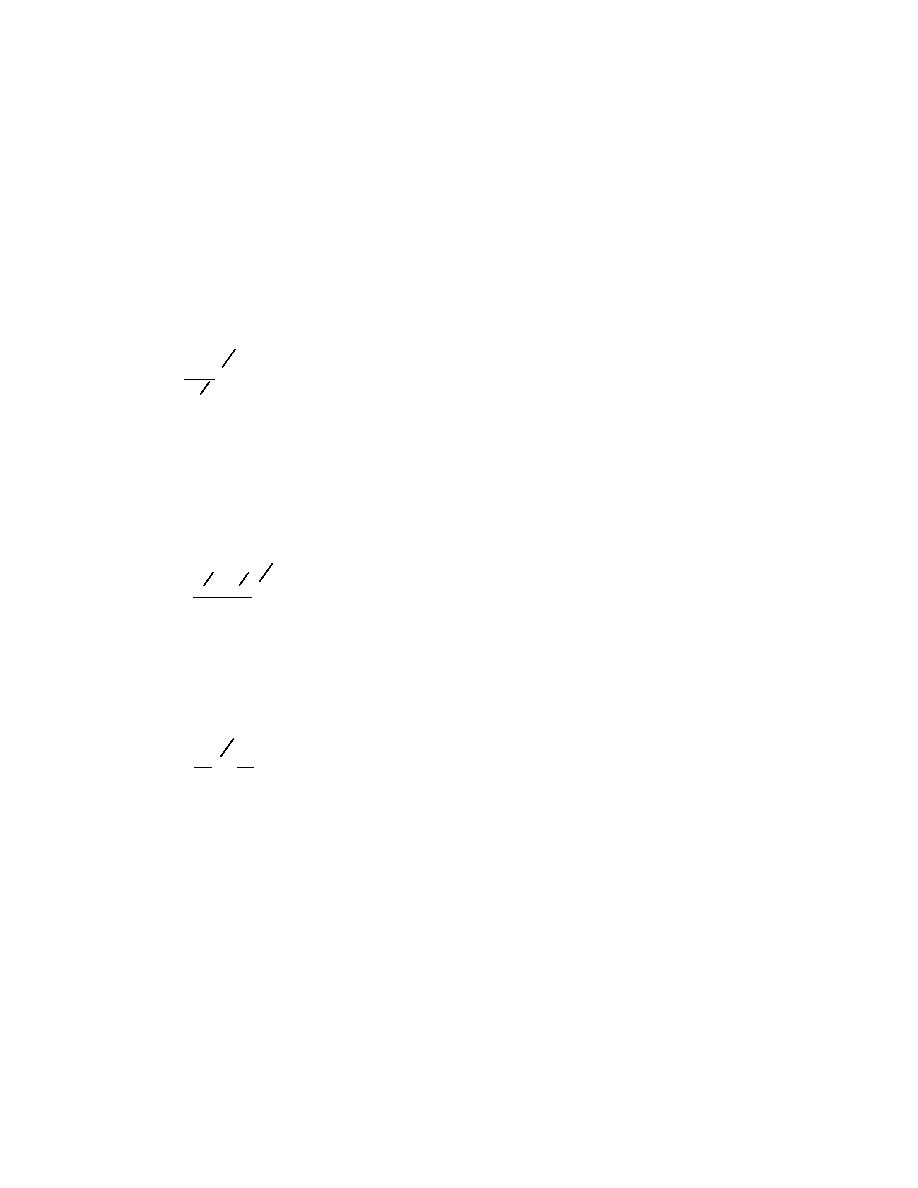
where Ri is the hydraulic radius of the ice-covered
transport is assumed to occur at locations where a
channel, and τ is the shear stress on the underside
solution to eq 15 is obtained; if no solution is pos-
sible (i.e., Φn < Φc), deposition is assumed to oc-
of the ice cover.
Because the width of a river channel is often
cur. An iterative process is required to obtain an
much wider than its depth, the open-water hy-
equilibrium frazil deposit. The ice cover of the
draulic radius R (the ratio of cross-sectional area
hydraulic model is thickened at the locations
to wetted perimeter) of an open-water reach is of-
where deposition is identified, beginning with the
ten approximated as H, the water depth. In the
most upstream location. The ice-covered hydrau-
ice-covered case, the wetted perimeter is effec-
lic model is rerun, providing new values of R and
Sf, which are used to calculate a new Φn for each
tively doubled, so Ri can be approximated by yi/
2, where yi is the under-ice depth, often calculated
cross section, thus identifying locations of trans-
from Manning's formula as
port and deposition under the updated hydraulic
conditions. The process is repeated until no fur-
ther deposition is possible or until the volume of
3
cqn
5
the deposited frazil ice nears the estimated vol-
yi = 1 c
(12)
ume produced. The variables required in this
Sf 2
method are ρ, ρi, dn, Cf, Sf, and the variables nec-
essary to calculate R: q, ni, nb, and nc.
where c is a coefficient (1.5875 in SI units of s/m1/3
and 1.0654 in English units of s/ft1/3), q is the dis-
Ice cover formed from shoving and
charge per unit width, and nc is the composite
internal collapse
Manning's n for the channel. Nezhikhovskiy
When the forces exerted by incoming ice in-
(1964) reviewed methods of determining compos-
crease to the point that they exceed the internal
ite channel roughness and suggested the use of
strength of ice accumulations formed by juxtapo-
the Belokon-Sabaneev formula:
sition or thickened by deposition, the ice accumu-
lation will fail. The failure may be large scale, re-
2
n3 2 + n3 2
3
sulting in the transport of ice for large distances
nc = i
b
(13)
until the accumulation stops again, or it may be
2
smaller in scale, resulting in a local shoving and
thickening of the accumulation. The shoving and
in which ni is the Manning's n for underside of ice
thickening process is an inherently unsteady pro-
and nb is the Manning's n for the bed. Other for-
cess that may eventually cause the formation of
mulations are presented in Uzuner (1975). The
what is often termed an equilibrium jam; that is, a
roughness ratio can be used to modify the ice-
jam in which a uniform section of ice has reached
affected hydraulic radius as follows:
a thickness where the external and internal forces
3
are in equilibrium (Fig. 4).
n
2
yi
Ri = i
Zufelt and Ettema (1997) developed an un-
.
(14)
nc
2
steady model of the shoving and thickening pro-
cess, and a stationary ice cover subroutine has been
used in conjunction with the one-dimensional
White and Acone (1998) modeled frazil depo-
unsteady flow model UNET developed by the
sition beneath an ice cover at a river-reservoir
Hydrologic Engineering Center (HEC) (USACE
confluence utilizing both ICETHK and the sim-
1995). The use of a dynamic ice cover in UNET is
plified version of Shen and Wang's functional re-
under development (McGilvary et al. 1995, Daly
lationship in eq 6 to 10:
et al. 1997). However, most currently used mod-
els assume steady state conditions, including the
Φn = 5.487(Θn Θc )
1.5
(15)
HEC's River Analysis System (HEC-RAS) (USACE
1997), the ICETHK option of the USACE step-
where Θc = 0.041. The following process was used:
backwater computer program HEC-2 (USACE
1990), and Canadian models RIVJAM and ICESIM
1) a hydraulic model with stable ice cover must
(Healy et al. 1997). This assumption is actually con-
be developed for the reach of river in question; 2)
servative except in the downstream transition
variables R and Sf calculated by the hydraulic
model are used to estimate Θn using eq 10 and 11,
zone, and hence has been deemed acceptable.
from which Φn is calculated using eq 15; 3) frazil
Zufelt (1999) presents a test that can be used to
6



 Previous Page
Previous Page
